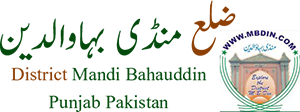Future industrial potential
Keeping in view the availability of raw-material, skilled labour, industrial units, local / national / international demand, future industrial potential of district Mandi Bahauddin is discussed hereunder
It would, however, be kept in mind that though the above mentioned factors facilitate the success of any industrial unit, yet the entire success depends upon the investors / entrepreneurs and the capabilities of the personnel having the managerial control. Therefore, it is advisable that detailed feasibility of industrial project must be carried out before making final decision for investment.
AGRICULTURE
Major crops and fruits of district Mandi Bahauddin are sugarcane, wheat, rice, citrus and guava. Their average annual production over the period 1998-2001 was 1302, 291, 114, 64 and 3 thousand M. Tons respectively. A variety of vegetables are also grown in the district.
There are 5 flour mills, 2 sugar mills and one textile spinning unit already operating in the district.
In view of the availability of raw material and existing agro-based industries, there exists little scope for additional flour mills. However, there exists good prospects for briquettes, fruit juice/squashes/pickles and vegetable dehydration.
LIVESTOCK
As per Livestock Census 1996, the population of cattle, buffaloes, sheep and goat was 155, 400, 31 and 153 thousand heads respectively. As regards poultry, there are 78 broilers, 43 layer poultry farms having rearing capacity of 647 and 171 thousand birds respectively.
There exists good scope for milk processing, dairy products, dairy farms, poultry breeding farm, animal/poultry feed, cattle/goat/sheep fattening farms, etc.
FORESTS.
District Mandi Bahauddin is rich in forest resources. The annual production of timber and fire-wood during 2000-2001 was 70872 and 102634 cubic feet respectively, which reflect very good prospects for wood seasoning / processing, furniture / flush doors / windows, particle / veneer board .
INDUSTRY
There are some important industries operating in district Mandi Bahauddin such as leather footwear, sugar, textile, etc.
In view of the existing industries there exists good prospects for chip/hard board, electric wire/cables, capacitors/resisters, circuit breakers, plastic electrical accessories, etc.
DEMAND BASED INDUSTRY
In view of the localized requirement and the existing industrial pattern of district Mandi Bahauddin, there exists a good prospect for biscuit, readymade garments, hosiery, woollen knitwear, etc.
LIST OF IDENTIFIED PROJECTS
The following industrial projects have been identified for investment in district.
– Animal / Poultry Feed
– Biscuit
– Bakers Yeast
– Breeding Poultry Farm
– Chip/Hard Board
– Circuit Breakers
– Capacitors / Resisters
– Cattle / Goat / Sheep Fattening Farms
– Dairy Farms
– Dairy Products
– Electric Wires / Cables
– Furniture
– Flush Doors / Windows
– Fruit Juice / Squashes / Pickles
– Hosiery
– Milk Processing
– Particle / Veneer Board
– Plastic Electrical Accessories
– Readymade Garments
– Vegetable Dehydration
– Woollen Knitwear
– Wood Seasoning / Processing
Existing industry pattern
DESCRIPTION OF EXISTING INDUSTRIES.
There are about 879 cottage level and small/medium/large scale industrial units operating in the district. The installed capacity of selected industrial sector and details regarding major industrial units are given here.
|
Sr.No. |
INDUSTRY |
NO. OF UNITS |
INSTALLED CAPACITY |
|
1 |
Chip Board |
1 |
40 M.Tons /Day |
|
2 |
Dairy Products |
1 |
1500 Litres /Day |
|
3 |
Flour Mills |
5 |
640 M.Tons /Day |
|
4 |
Food Colour |
1 |
20 M.Tons |
|
5 |
Sugar |
2 |
13000 TCD |
|
6 |
Textile Spinning |
1 |
14400 Spindles |
Existing Industries
- CHISHTIA MEHRIA PHALIA
- WARRAICH FLOUR & GENERAL MILLS
- JADEED ZAMINDARA ENGG. WORKS PHALIA ROAD
- KAMAL AGRO ENGG. PHALIA ROAD
- M. INAYAT TROLLY MAKER PHALIA ROAD
- MUHAMMAD MUNIR TROLLY MAKER MALIKWAL
- NOOR MUHAMMAD TROLLY MAKER MALIKWAL
- SAQIB ZAMINDARA ENGG. PHALIA ROAD
- SULTAN & BROTHERS MALIKWAL
- ASGHAR & BROTHERS GORAH MOHALLAH MANDI
- BASHIR AHMED S/O M. ISMAIL, SHAFQATABAD
- SADAT PARTICLE MILLS (PVT) LTD. LATHER KHURD
- NESTLE MILK PACK CENTRE VILLAGE CHANNAI SAYYDAN PHALIA
- HAMZA FLOUR MILLS CHAHIAN WALA
- LIAQUAT FLOUR MILLS WASSO ROAD
- PHALIA ROLLER FLOUR MILLS SARGODHA ROAD, PHALIA
- RIZWAN FLOUR & GENERAL MILLS MANO CHAK, PHALIA
- SADAT ROLLER FLOUR & GENERAL MILLS SAT SIRA CHOWK PHALIA ROAD
- RAINBOW DYE TECH (PVT) LTD. KALUWALI SHAHEEDANWALI ROAD RAINBOW CITY PO BOX 3
- MALIK BASHIR AHMAD CHUNGI NO. 6
- MALIK TRADERS SHAHEEDANWALI ROAD NEAR WAQAR RICE MILLS
- MUHAMMAD HUSSAIN S/O AHMAD DIN RAILWAY ROAD
- ABDUL LATIF MUNSHI MOHALLAH
- ALLAH RAKHA OIL MILL CHURCH MOHALLAH WARD NO.5
- MUHAMMAD ASLAM OIL MILL MUNSHI KHAN STREET NO.6
- BHAGAT RICE MILLS QADIRABAD ROAD BHAGAT PHALIA
- GONDAL RICE FACTORY MALIKWAL
- ITTEFAQ RICE MILLS MUSHTAQ AHMAD S/O ATTA ULLAH GONDAL LEATHER KHURD PHALIA
- MACOON & TARAR RICE & INDUSTRIES GUJRAT MANDI ROAD PHALIA
- MADINA RICE INDUSTRIES GUJRAT MANDI ROAD PHALIA
- MILLAT RICE INDUSTRIES GUJRAT MANDI ROAD PHALIA
- MILLAT RICE MILLS NEW RASUL ROAD
- RAINMBOW INDUSTRIES MANDI ROAD PHALIA
- RANJAH RICE FACTORY PHALIA
- ZAHID RICE MILLS KHATHALA SYYDAN NEAR SHAH TAJ SUGAR MILLS
- MUHAMMAD ASHRAF NAI ABADI WARD NO. 9
- JAMAL SOAP FACTORY MOHALLAH MUGHALPURA RAILWAY ROAD
- PHALIA SUGAR MILLS LTD. KARMANWALA TEH.PHALIA
- SHAHTAJ SUGAR MILLS LTD
- MALIK WAL TEXTILE MILLS LTD KATHIALA SHEIKHAN
- BASHIR TEXTILE WEAVING FACTORY CHALIAN WALA

























